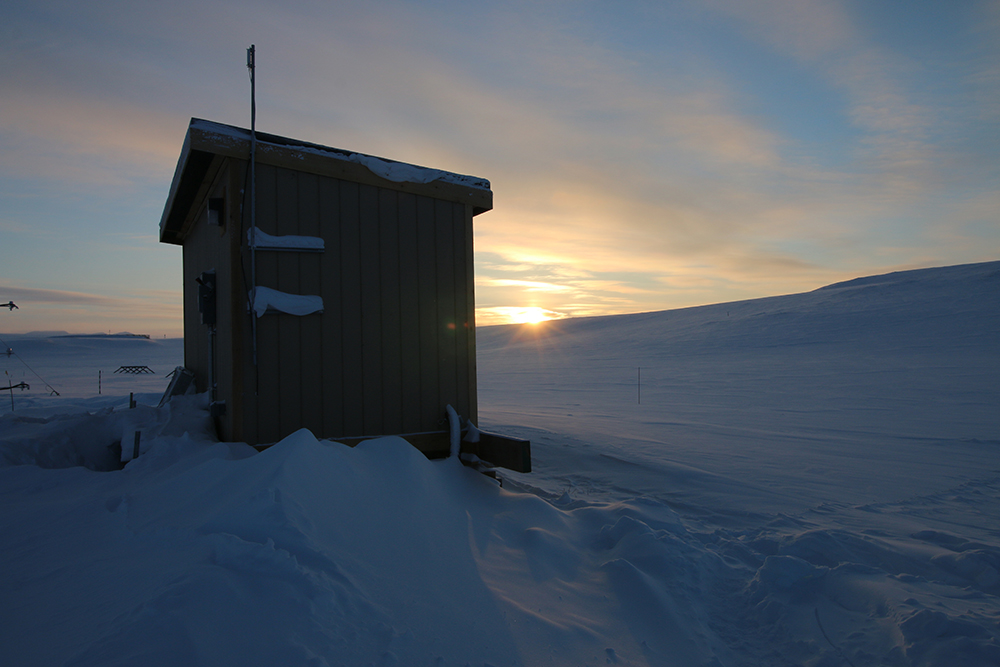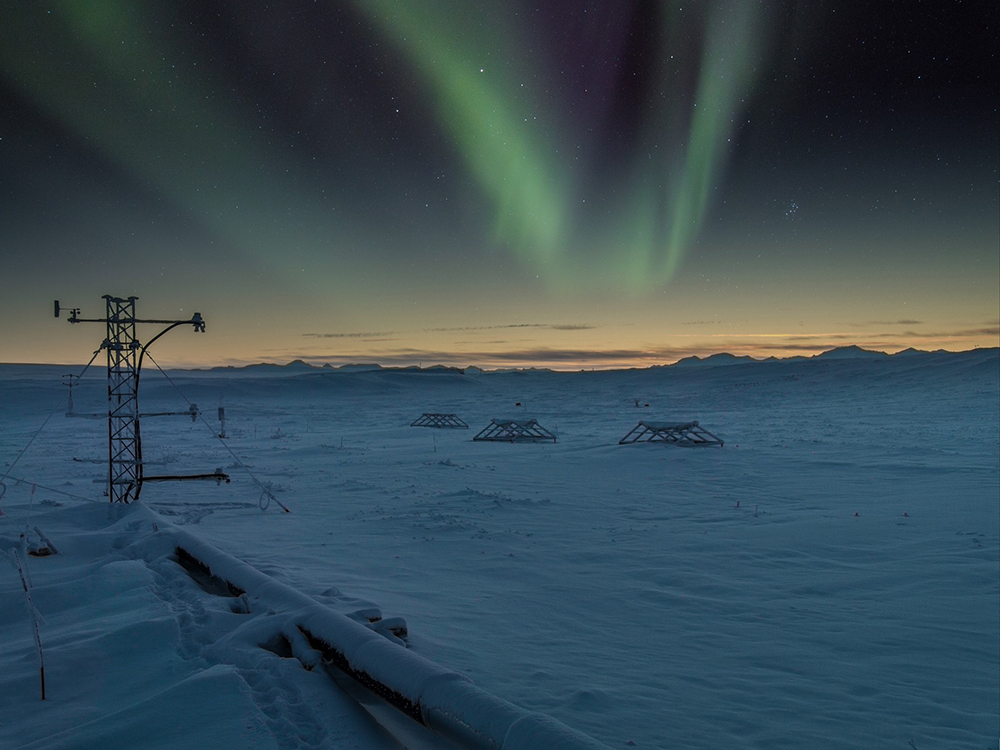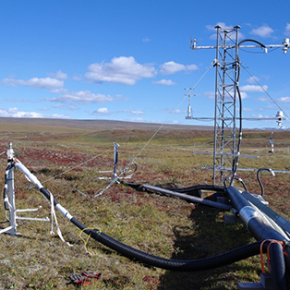
Mercury in the Arctic Ocean: Stopover in the tundra
The Arctic Ocean and its fauna are far from major sources of pollution. So why are they so contaminated with mercury? This mystery has just been solved by an international team including researchers from the CNRS, the Desert Research Institute, and the University of Colorado.1 They have shown that tundra vegetation and soils sequester atmospheric mercury originating from industrial activities in the mid-latitudes. In the spring, when surface snow melts and the top layer of the soil thaws, trapped mercury is released in large quantities and makes its way to the Arctic Ocean, where it is concentrated in the marine fauna. These findings, based on data collected in Alaska over a two-year period, are published in Nature (July 13, 2017).
- 1Other participating institutions were the University of Massachusetts–Lowell and the Gas Technology Institute in Des Plaines, Illinois.
Each year, coal-fired power plants, mining operations, and other industrial activities emit thousands of metric tons of mercury into the atmosphere. In the aquatic environment, mercury accumulates in the food chain. Concentrations are especially high at the top of the chain, among large predators—including walruses, belugas, and certain fish. Their consumption by humans may lead to neurotoxicity in children and cardiovascular disease in adults. These problems are particularly worrisome in the Arctic, where levels of faunal contamination by mercury are among the highest in the world, even though this region is home to scarcely few pollution sources. Confronted with this paradox, scientists have long suspected atmospheric conveyance. Mercury, according to this hypothesis, is carried from the mid-latitudes towards the polar regions, where it falls as snow that contaminates the Arctic waters. Yet this conjecture has gradually been disproved by the discovery that rivers carry more mercury into the Arctic Ocean than the atmosphere.
To understand where this mercury comes from, Martin Jiskra and Jeroen Sonke, from the Géosciences Environnement Toulouse laboratory (CNRS / Université Toulouse III—Paul Sabatier / IRD / CNES), teamed up with US-based researchers—including Yannick Agnan, who now works at the METIS laboratory (CNRS / UPMC / EPHE). In Alaska, they measured exchange of mercury between the atmosphere and the tundra, an environment characterized by the presence of permafrost—subsurface soil that is permanently frozen—and vegetation consisting of lichen, moss, herbaceous plants, and shrubs. While the American team recorded mercury flows, or fluxes, from the atmosphere to the terrestrial surface, the French crew compared the isotopic signature2
of mercury in the soils and vegetation to samples of snow and ambient air, in order to elucidate mercury exchange dynamics there—as well as the route of Arctic Ocean contamination.
The scientists observed that the tundra vegetation and soils capture gaseous atmospheric mercury all year round, though this process accelerates in the summer when plant life fully awakens from its winter torpor. The tundra traps a large amount of mercury: between a third and a half of all that contained in the Earth's soils. In the springtime, when surface soil thaws, this pollutant seeps into local rivers, where it is whisked away to the ocean. There it enters the food chain, and ultimately reaches our plates.
Global warming, whose pace is almost twice as fast in the Arctic as in the rest of the world, is causing more permafrost to melt. This may release greater quantities of mercury and further contaminate the region's fauna—at a time when bordering countries are looking forward to fishing new waters there.

Flux tower measuring mercury exchange in the tundra at Toolik Field Station in Alaska

Cabin where analytical instruments are kept at Toolik Field Station (January 2015)

Installation for mercury flux measurements at Toolik Field Station
Other images are available upon request.
- 2A chemical element can exist in various forms called isotopes, whose nuclei have different masses. Isotopic signature refers to the specific proportions of these isotopes in a sample at a given location. Like a footprint, it lets researchers follow a trail back to the source of contamination.
Tundra uptake of atmospheric elemental mercury drives Arctic mercury pollution, Daniel Obrist, Yannick Agnan, Martin Jiskra, Christine Olson, Dominique Colegrove, Jacques Hueber, Christopher Moore, Jeroen Sonke & Detlev Helmig. Nature, 13 July 2017. DOI: 10.1038/nature22997


